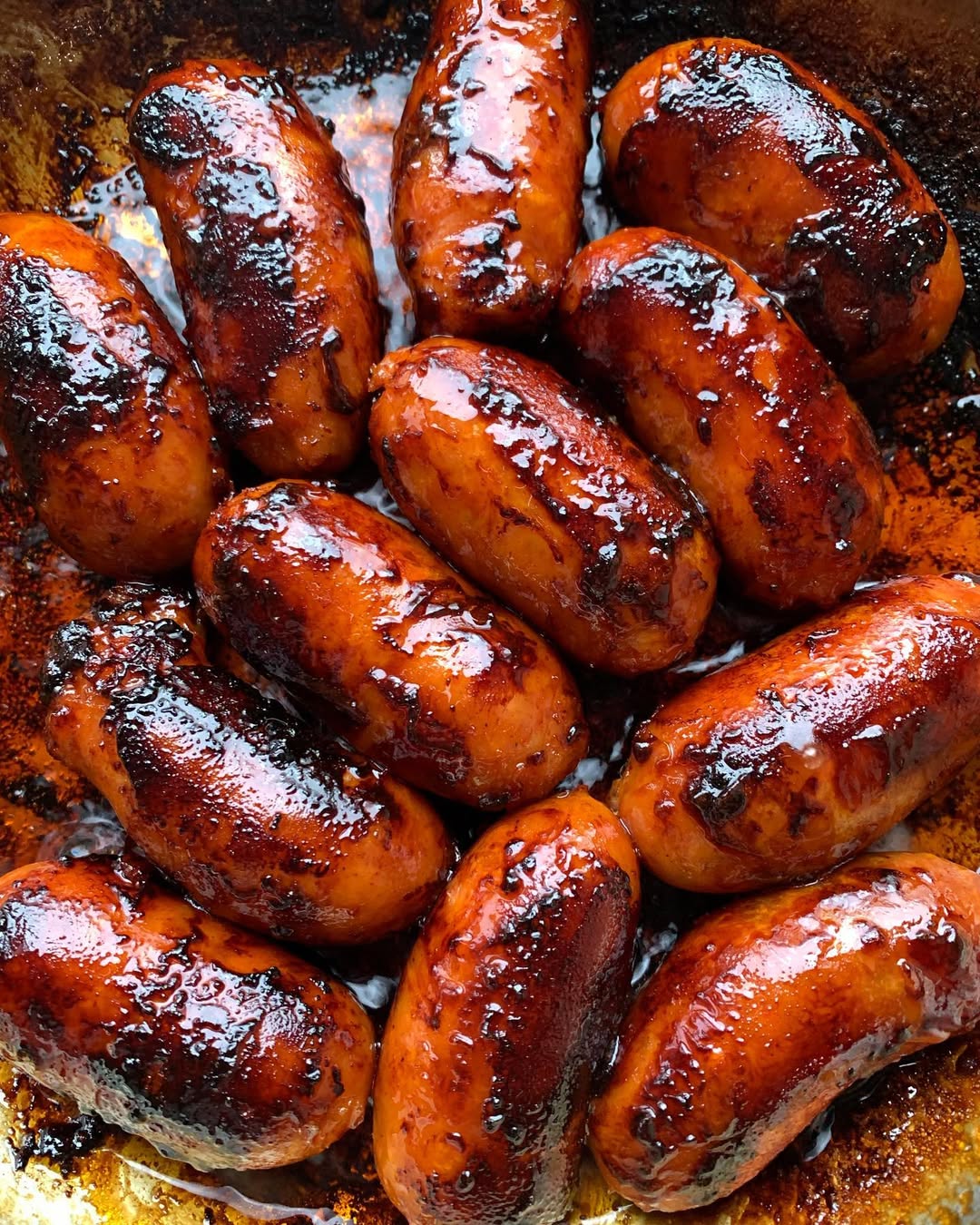You’ll smell it before you see it – that unmistakable mix of sweetness, spice, and smoke curling through the air. That’s grilled longganiza, and when it hits the flame, something magical happens.
This isn’t your average sausage. It’s Filipino longganiza – sweet, garlicky, a little sticky, and full of character. It’s the kind of food that makes you stop mid-sentence, close your eyes, and say, “Oh yeah… that’s the stuff.”
And while most people fry it, I’m here to convert you to the flame. Because once you’ve had longganiza grilled to caramelized perfection, you’ll never go back to the frying pan.
Let’s break down why, how, and what happens when this humble sausage meets fire – and how to nail it like a pro.
What Makes Longganiza So Irresistible
For the uninitiated, longganiza is the Filipino cousin of Spanish longaniza – a local sausage that comes in endless regional variations. Pampanga’s version is sweet and sticky, Lucban’s is garlicky and bold, and Vigan’s is vinegary and punchy.
Each type has its own attitude – but the one thing they all share? They love heat.
When you grill longganiza, the sugar caramelizes, the fat crisps, and the smoke adds depth you simply can’t get from a frying pan. It’s the same sausage, but it evolves – kind of like a rock song turned acoustic: same melody, totally new mood.
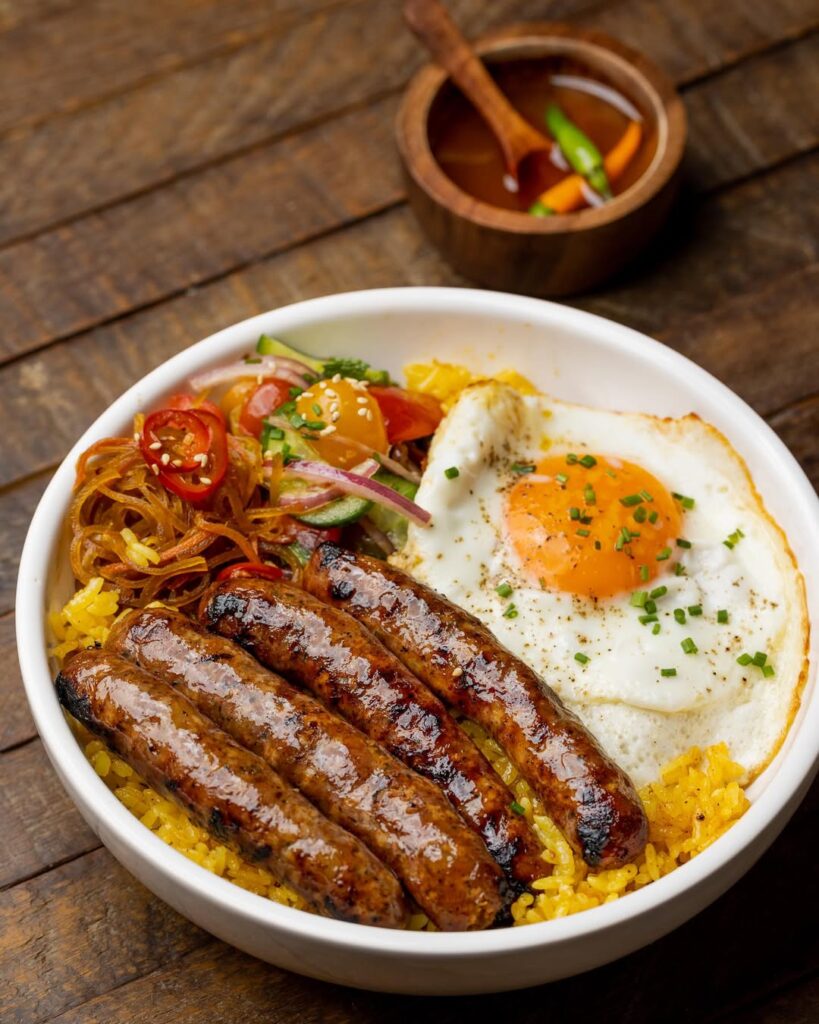
The Art of Grilling Longganiza: Timing Is Everything
Grilling longganiza is a delicate dance between heat and patience. Too high, and you’ll end up with burnt sugar and raw meat. Too low, and you’ll never get that golden, sticky char.
The sweet spot? Medium heat – steady, consistent, and just enough to coax the fat out slowly. Start by steaming the links briefly (yes, with a splash of water and a drizzle of oil) to cook them through, then finish on the grill for that caramelized finish.
Flip often – longganiza is packed with sugar and fat, and both love to flare up. Think of it like roasting marshmallows: you’re chasing that perfect brown, not black.
The result? A crispy casing that crackles when you bite, and juicy, smoky meat inside that tastes like home and fiesta rolled into one.
Gas vs. Charcoal: The Longganiza Grill-Off
There’s an age-old debate among grill masters – gas or charcoal? For longganiza, charcoal wins by a landslide.
Charcoal gives off that rustic, smoky aroma that wraps around each sausage, enhancing the caramelized sweetness. It’s what transforms your backyard into a street-side BBQ joint in Pampanga.
Gas grills, though, are faster and more convenient – great for weeknight cravings or condo setups. The trick with gas? Add soaked wood chips or a smoker box to mimic that classic char.
Either way, keep the lid closed as much as possible to trap the smoke and intensify the flavor. Remember: grilling longganiza isn’t about speed – it’s about the slow build of sweetness, spice, and smoke that makes each bite taste like celebration.
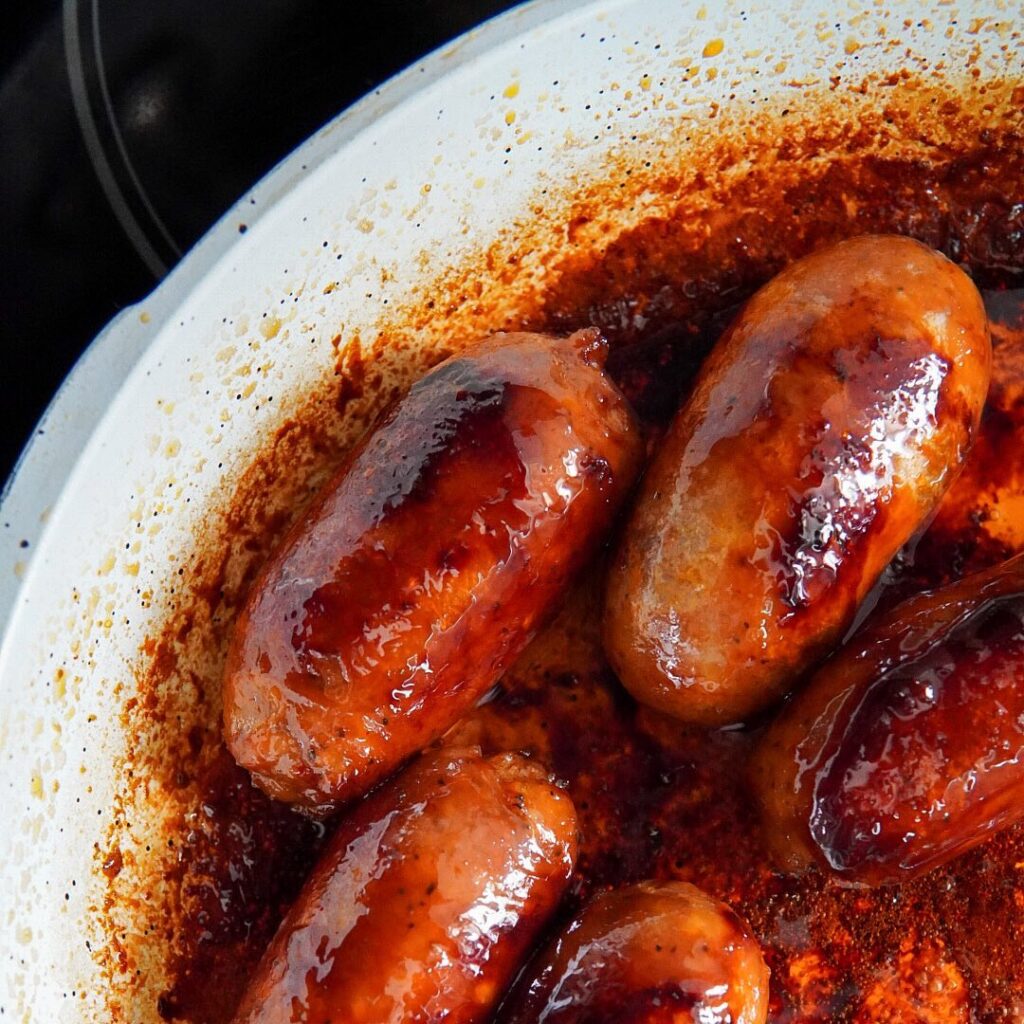
Glazes, Marinades, and Magic Touches
If you think longganiza can’t get better, you haven’t played with glazes. The sausage already has its own sugar-and-spice symphony, but brushing it with something extra can elevate it from great to legendary.
Try a honey-soy glaze for a glossy finish, or mix calamansi juice and brown sugar for a tangy-sweet balance that wakes up your taste buds. Feeling adventurous? Add a dash of chili oil or crushed black pepper for that smoky heat.
The secret is to brush your glaze during the final minute or two of grilling – any sooner, and it’ll burn before the sausage finishes cooking.
When it hits the fire just right, it bubbles into that irresistible sticky shell that clings to your fingers and demands a cold drink on standby.
Grill Like a Local: Backyard BBQ Filipino-Style
In the Philippines, grilling longganiza isn’t just cooking – it’s a social event. Someone’s always fanning the coals, another’s opening a beer, and the air is thick with laughter and smoke. It’s less about precision and more about presence.
You’ll see banana leaves laid out as makeshift plates, paper cups filled with sawsawan (vinegar, soy sauce, chili, calamansi), and kids running around as the first batch of sausages hits the grill.
That’s the beauty of Filipino-style BBQ: it’s communal, messy, and joyfully unpretentious. When you grill longganiza this way, you’re not just feeding people – you’re creating moments.
Because nothing says “home” quite like grilled longganiza eaten with your hands, straight off the skewer, while someone yells, “Isa pa, dagdagan mo ng suka!”
Beyond Breakfast: Longganiza in Every Meal
Who says longganiza’s only for mornings? Once you start grilling it, you’ll want it at every meal.
Slice it into pasta for a smoky Filipino carbonara, crumble it onto pizza instead of pepperoni, or stuff it into pan de sal with pickled onions for an instant merienda hit.
You can even chop it into your sinigang for a sweet-savory twist that surprises everyone at the table. The grilled flavor plays well with anything that needs a punch of umami and sweetness.
Think of it as the Filipino bacon – versatile, indulgent, and impossible to resist. So next time you fire up the grill, don’t stop at longsilog.
Let your imagination run wild – because longganiza doesn’t clock out after breakfast.
The Secret to That Perfect Sweet-Savory Balance
Grilled longganiza works because it’s a flavor tug-of-war – sweet vs. salty, smoky vs. tangy.
The sugar in the sausage caramelizes on the grill, creating that sticky, lacquered glaze. The garlic and vinegar cut through the sweetness, keeping it balanced. The smoke adds complexity, like a touch of perfume on something already irresistible.
Different regions have their take – Pampanga’s version leans sweet like candied meat, Lucban’s brings the garlic punch, and Vigan’s adds a sharp, tangy twist.
The trick? Find your version and own it. If you like it bolder, add chili flakes to your glaze. Want it extra shiny? Hit it with a bit of honey at the end.
Grilling isn’t just about cooking – it’s about control and creativity in real time.
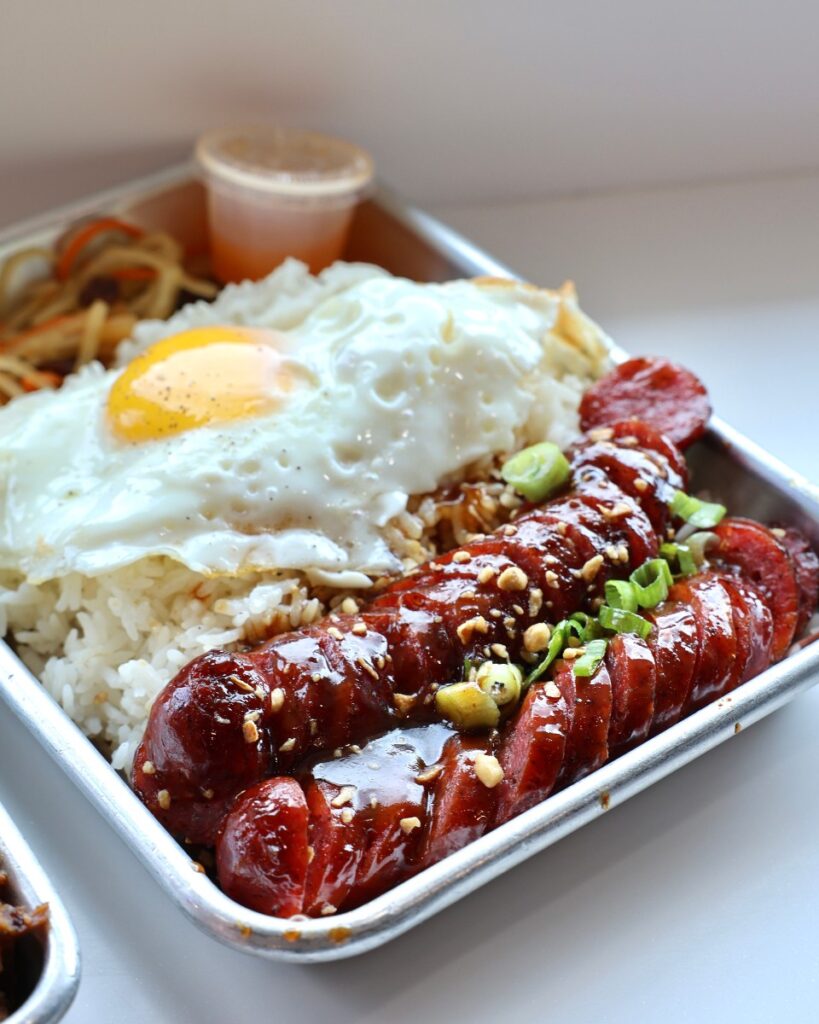
Serving Suggestions: The Filipino Way
Traditionally, longganiza belongs to the holy breakfast trinity: longsilog – longganiza, garlic rice, and egg. But grilling it opens the door to all kinds of mischief.
Try these:
- Mini sliders with spicy mayo and lettuce for a backyard party.
- Skewered longganiza and pineapple for tropical BBQ bites.
- Chopped leftovers tossed into fried rice for next-morning victory.
Chef’s Tip: Pair your grilled longganiza with iced calamansi juice or a cold local beer – the citrus cuts through the richness, and the smoke plays nice with the bubbles.
There’s no wrong way to eat it – only more ways to fall in love with it.
Why Grilled Longganiza Deserves a Spot on Your Menu
Here’s the truth: grilling longganiza is low effort, high reward cooking. It’s simple, primal, and ridiculously satisfying.
You don’t need a fancy grill, a chef’s jacket, or imported ingredients – just flame, patience, and good sausage.
What you get in return is more than a meal. It’s the smell of smoke in the air, the hiss of fat hitting metal, and that moment when the glaze bubbles and you know – it’s perfect.
Cooking is supposed to be fun, and grilled longganiza gets that. It’s messy, it’s loud, it’s full of flavor and laughter. The kind of food that draws people to the table before you even call them.
So go ahead. Fire up the grill. Let the sweetness caramelize, the smoke do its magic, and the laughter start early.
Because when that first bite hits – sweet, savory, and smoked – you’ll know exactly why this is your new favorite longganiza.
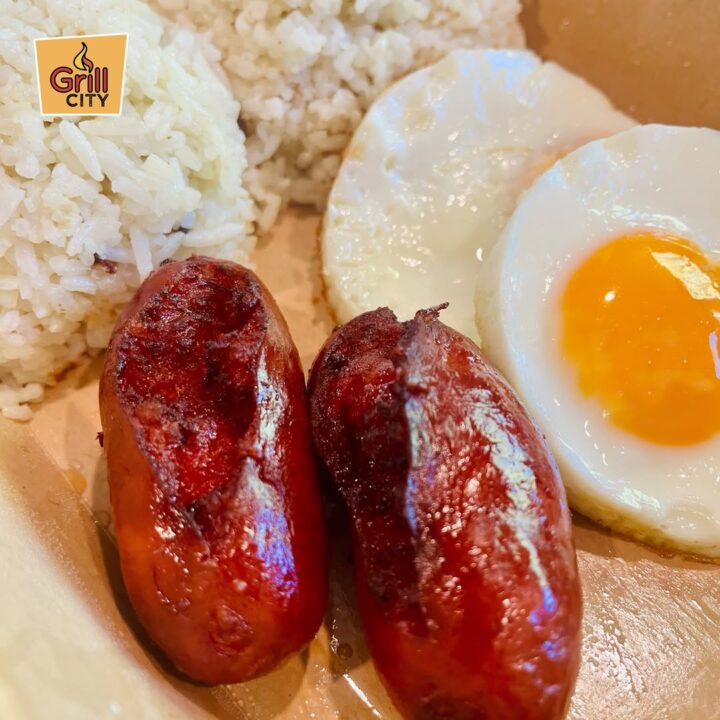
Smoky, Sweet, and Seriously Addictive – Grilled Longganiza
Image credit: @seafoodcitysupermarket
Ingredients
- 500g Filipino longganiza (sweet, garlicky, or spicy – your call)
- 1 tbsp cooking oil – keeps things from sticking
- ½ cup water – for the classic steam-then-sear method
- 1 tbsp honey or brown sugar glaze (optional) – brings the smoke alive
- Banana leaves or foil – for easy grilling and that aromatic kick
- Sides: garlic rice, atchara (pickled papaya), and a sunny-side egg
Pro Tip
- If you can, get fresh longganiza from your local wet market or Filipino store. The texture is looser and juicier than frozen ones – and trust me, it makes a world of difference.
Instructions
- Preheat and Prep. Fire up your grill to medium heat (around 375°F / 190°C). Brush a little oil on the grates or line them with banana leaves if you want that subtle, earthy aroma. The leaves will char slightly — that’s flavor talking.
- Steam to Soften. Longganiza is fatty and flavorful, but it’s also dense. Start by steaming it in ½ cup of water right on the grill or in a pan. Cover and let it cook for 5–7 minutes until the water evaporates. This ensures the sausage cooks through before the caramelization phase. Think of it as a warm-up stretch for your meat.
- Grill and Glaze. Once the water’s gone, add a drizzle of oil and let the longganiza hit direct heat. You’re looking for blistered skin and sticky edges, not full-on burn. Turn them occasionally for even color. Brush on your glaze — honey + soy sauce or brown sugar + vinegar — in the last few minutes. That’s your finishing move, your mic drop.
- Rest and Serve. Let the sausages rest for 2–3 minutes off the grill before slicing. It redistributes the juices so every bite hits just right. Serve hot with garlic rice, atchara, and fried egg — or go rogue and stuff them into a toasted bun.
Pro Tip: Throw a few wood chips or charcoal chunks on the fire for that deep, backyard-smoke vibe. It turns your grilled longganiza into a five-star barbecue moment.
Featured image credit: @chiieelovestoto

